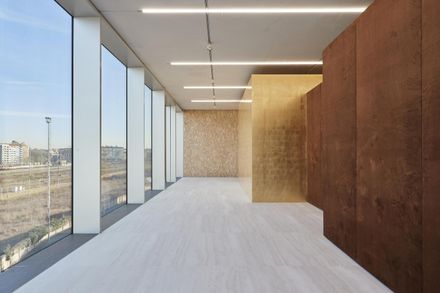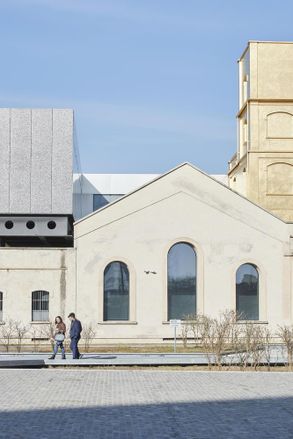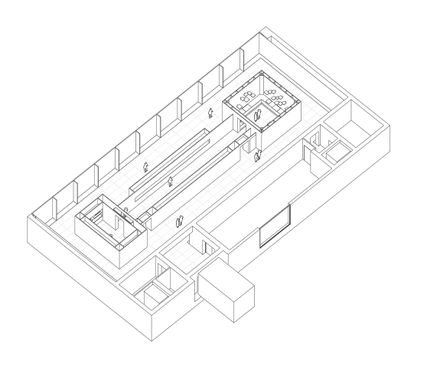The Porcelain Room
ARCHITECTS
Tom Postma Design
MANUFACTURERS
GRAPHISOFT, Adobe, Gimmick and Gizmo Zoom, Peroni
DESIGN TEAM
Tom Postma, Paride Piccinini, Mátyás Simonyi, Roel Smit
LOCATION
Milan, Italy
CATEGORY
Exhibition Center
Text description provided by architect.
The exhibition is an homage to the ancient porcelain rooms of European palaces and aristocratic houses. The design created by Tom Postma Design represents a contemporary interpretation of the porcelain room. A temporary setting in direct dialogue with the permanent architecture by Rem Koolhaas.
The exhibition brings together more than 1,700 individual Chinese export porcelains made from the 16th to the 19th centuries and is curated by Chinese porcelain experts Jorge Welsh and Luísa Vinhais. It explores the historical context, scope and impact of Chinese exported porcelains up to the present time.
The spatial design we created for The Porcelain Room exhibition is divided into 3 sections and conceived as a room within a room. The design comprises of two environments covered in brown velvet including multiple showcases and an intimate space decorated in gold.
The three individual spaces exude their own specific ambiance, arising from the desire to recreate that distinct intimate feeling of a porcelain room. “Designing this exhibition was an exceptional experience.
Like designing an installation. The spatial design is innovative and quite physical.
Requiring the right materials and optimal lighting to present this precious and extraordinary collection of porcelains in the most perfect way.” Tom Postma.
The precious collection shows the very first commissions of Chinese porcelains by European clients after the arrival of the Portuguese in China.
Early Western orders are extremely rare, with only around 150 having survived to the present day.
Over 53 precious pieces are elegantly lit and displayed as if they are floating through darkness.
The selection of unique first orders, on loan from the most relevant public and private collections from all over the world, represents the entire array of first orders in terms of typology, iconography, and period of manufacture.
One of the highlights of the exhibition is the golden room, a true contemporary homage to the tradition of porcelain rooms, like the iconic Porcelain Cabinet at the Charlottenburg Palace and Santos Palace.
The room creates an intimate interplay between the visitor and the breath-taking collection of more than 1,400 porcelain plates decorating the entire room.
Jorge Welsh – artist in his early years – painted lines of colours, very organic and soft, using the plates as ‘brushstrokes’ of modern painting.
Corridor with tureens The middle section features a wide selection of objects interpreted as natural and surprising forms representing animals, vegetables and fruit tureens, in order to explore the impact and exoticism of Chinese tableware made for Western markets.





















